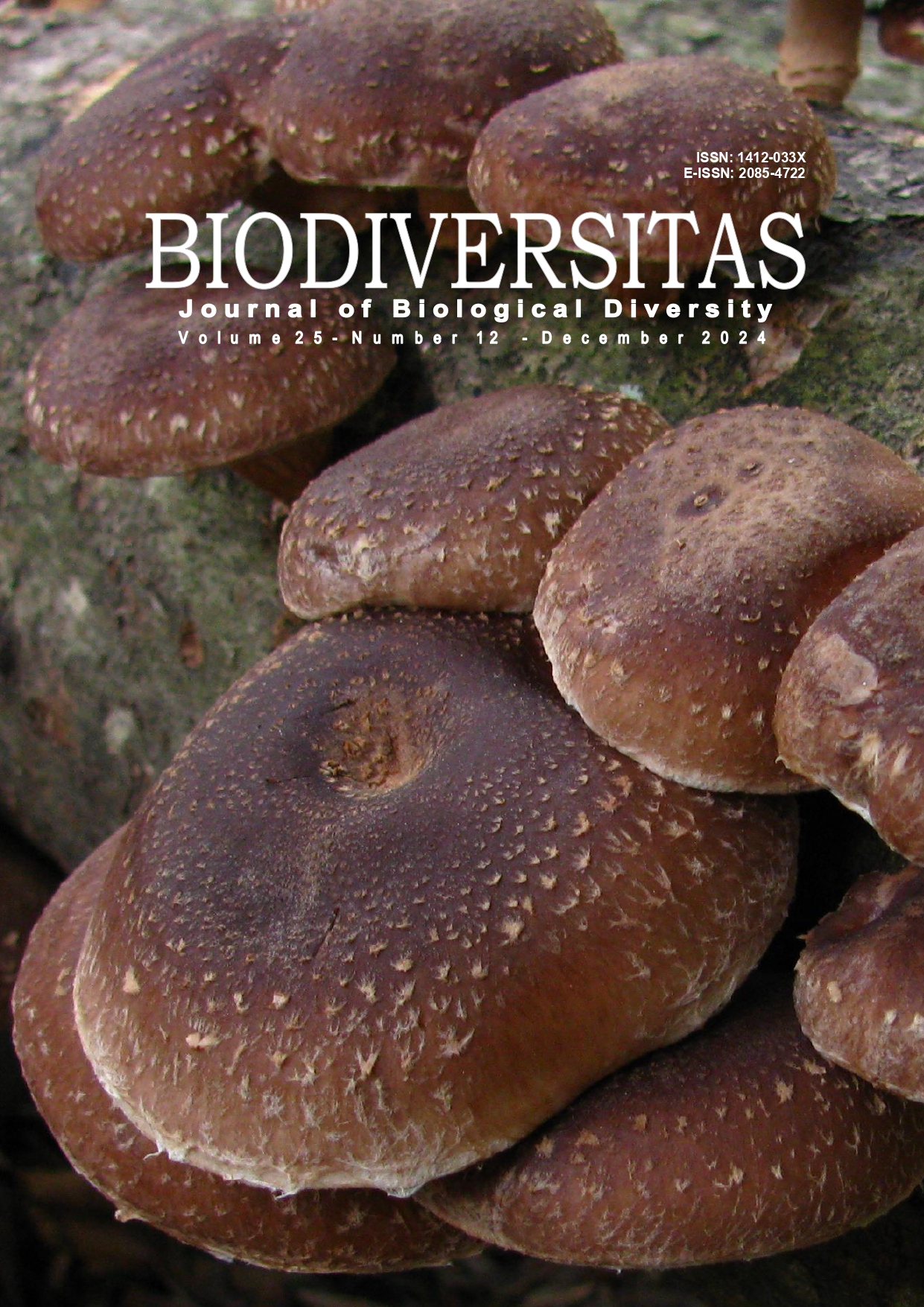Genetic variability of IGF1 and IGF2 and correlation to body weight in Kedu chicken of Indonesia
##plugins.themes.bootstrap3.article.main##
Abstract
Abstract. Rosidi, Suswoyo I, Mugiyono S, Ismoyowati, Tugiyanti E. 2024. Genetic variability of IGF1 and IGF2 and correlation to body weight in Kedu chicken of Indonesia. Biodiversitas 25: 4846-4852. This study aims to examine differences in genetic variability using Insulin Growth Factors (IGF) to estimate the body weight of selected Kedu chickens. A total sample 37 chickens consist of 10 White Kedu, 10 Cemani Kedu, 10 Red Kedu, 5 Black Tongue Kedu, 1 Blorok Kedu, and 1 Lurik Walik Kedu. Next, their blood is taken from the chicken samples and analyzed in the laboratory. The identification of the IGF-1 and IGF-2 genes polymorphism was done by PCR and sequencing methods. The results showed two Single Nucleotide Polymorphism (SNP) of IGF1: c.166 T>A and c.169 A>G and IGF2: c.248 G>A and c.540 C>T. The frequency of genotypes was informed on GG, GA and AA with values of 0.71, 0.1 and 0.19, respectively. The base pair of 540 showed the existence of genotypes CC, CT and TT with values of 0.28, 0.62, and 0.1 respectively. The value of heterozygosity obtained at each base pair was c. 248 and the heterozygosity value was 0.3648, while the heterozygosity value of c. 540 was 0.4838. The correlation analysis showed that at c. 248 had a value of 0.57, which was relatively greater than that at c. 540, namely 0.15. The c. 248 genotypes of AA had greater body weight than the rest. In conclusion, AA genotypes in the IGF-1 and IGF-2 genes had a relatively high body weight compared to that of other genotypes, but IGF-1 had a relatively low association (correlation), so incompatible as a marker for future selection. An IGF marker can be used to estimate the body weight of the upcoming offspring of Kedu chickens.

